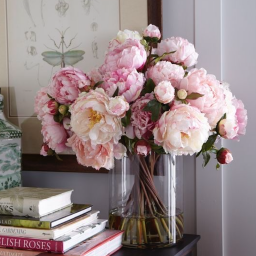1. Choose plants that attract bees.

Bees love native wildflowers, flowering herbs, berries and many flowering fruits and vegetables. Some honeybee favorites here in Massachusetts include – mints, basil, sage, thyme, borage, oregano, lavender, chives, buckwheat, berries, strawberries, blueberries, raspberries, blackberries, cucumbers, tomato, winter squash, pumpkins, melons, watermelons, broccoli, crocus, snowdrops, jonquils, tulips, sunflowers, asters, dandelions, clovers, lilacs, wisteria, cosmos, black-eyed susans, gaillardia, cup plants, goldenrod, loosestrife, bachelor’s buttons, bee balm, sedum, peony and honeysuckle. If you have the space, planting any type of fruit tree is perfect and trees such as maple, willow, black locust and sumac are also good food sources for bees. Planting Snowdrops or Siberian Squill in your yard is another simple way for a suburban gardener to provide an early spring food source for bees. The top ten bee-friendly plants include Lavender, Viper’s Bugloss, Mahonia, Hawthorn, Bluebells, Crocuses, Rosemary, Borage, Crab Apple Trees, and more.
2. Group the same plants together.

Try to plant at least one square yard of the same plant together to make a perfect bee attractor. But if you are short on space planting just a few wildflowers or herbs in a planter or window box is all that’s needed to provide more foraging habitat for the honeybee.
3. Pick plants with long blooming cycles.

Or choose plants with successive blooms. This way the bees will keep coming back again and again.
4. Let your plants flower.

Leave the flowers on your plants and deadhead them to allow the honeybees to get the pollen and nectar they need. If you are growing herbs or vegetables such as broccoli, harvest it but leave the plant intact. When you are done, let it go to flower for the pollinators and leave it in the garden until the flowers are gone. Last December, I saw firsthand how important a food source like broccoli left to flower in a backyard garden was to my honeybees at a time when nothing else was available for them to eat.
5. Provide a fresh water source

A sloping bird bath with stones for bees to stand on, a backyard waterfall, a pool, a dripping hose, almost any shallow water source will do. Cabbage and broccoli leaves full of fresh morning dew, and newly watered potted plants with peat soil are favorite destinations for my bees.
6. Do not use pesticides, herbicides or other chemicals in your garden.

Or anywhere in your yard including your lawn, other gardens and trees. After all, you are trying to attract bees right? Most of these chemicals are toxic to bees and have widespread effects which are detrimental to plants, beneficial insects and other native pollinators. This ban also applies to products your lawn care company uses. When in doubt leave it out.
7. Appreciate the beauty of weeds.

Dandelions, clovers, loosestrife, milkweed, goldenrod and other flowering weeds are very important food sources for bees. In areas filled with green sprawling lawns, dandelions and clovers are vital plants for a bees' survival. Let them grow and flower in your yard, and you will soon have your own personal honeybee sanctuary. The next time you see a dandelion going to seed, grab it, blow those seeds around and feel good knowing you are doing your part to help save the bees. It can’t be more simple than that!








